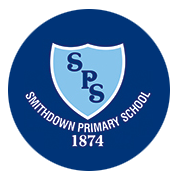
Planting some apple ?
One of our superstars has planted some apple ? seeds to see if they grow #smithdownsci #smithdowneyfs
206
One of our superstars has planted some apple ? seeds to see if they grow #smithdownsci #smithdowneyfs
206
Making unicorn ? playdough today to develop fine motor skills and see what happens when cornflour is mixed with hair conditioner #smithdowneyfs #smithdownsci
218
Exploring changes of state through messy play. #smithdowneyfs #smithdownsci
222
We love incorporating baking into our Understanding the World lessons! We watched how the cake mixture changed state after we added water. #smithdowneyfs #smithdownsci
217
Tasting different foods last week as part of learning about our bodies- some were a bit sour! #smithdowneyfs #smithdownsci
218

Year 1 have been naming the body parts in science this week. #smithdownscience @SmithdownPrimY1
133
Year 1 have had great fun labelling the body parts in science today. Well done! #smithdownscience @SmithdownPrimY1
126
Lots of exciting science activities waiting for you today Year 1! #smithdownscience @SmithdownPrimY1
129
We’ve been having lots of fun labelling human body parts today #smithdownsci @SmithdownPrimY1
119
Thank you to all the families who came to our stay and learn session today.
133
We have been exploring different push and pull forces that require contact between two objects. Lots of toys and actions helped us understand these forces. Year 3 did a great job of organising the forces into our Venn diagram. #smithdownsci
110
We are looking at life cycles in science, so now have 40 caterpillars that we are going to watch transform into butterflies. We have given them food, and are going to monitor them turn into chrysalises. #smithdownsci @MrsKellyx @MissGuy_
128
Kicking our electricity topic off in @SmithdownPrimY4 by thinking about what electrical appliances we have at home #smithdownsci
133
Great afternoon with 4KM back to doing what we love the most – investigating!! This time, circuits. They took up the challenge of making the light bulb light ? #smithdownsci @SmithdownPrimY4
134
4LA ~ Sorting mains and battery powered appliances today, then working scientifically to test our predictions about positions of components in a circuit @SmithdownPrimY4 #smithdownsci
128
4KM testing predictions about complete and incomplete circuits #smithdownsci @SmithdownPrimY4
131
Today we kicked off our topic and @Curriculum_USP project in @SmithdownPrimY2 by recapping what an animal is and learning about vertebrates/invertebrates @baronbedford @Edu_Meadows #smithdownsci
115
4LA hard at work exploring switches in circuits #smithdownsci
129
3KMc exploring how opposite poles repel and like poles attract with magnets #smithdownsci @SmithdownPrimY3
120
Deep in conversation about animal offspring in matching mothers to young #smithdownsci @baronbedford @Edu_Meadows
536
We then focused on how animals mature by looking at some life cycles. Mr. Ma let the Y5 caterpillars visit KS1 and just look at their faces. We identified some at pupa stage for some science in action #smithdownsci @baronbedford @Edu_Meadows
133
4KM exploring conductors & insulators this week @SmithdownPrimY4 #smithdownsci
127
4LA exploring conductors & insulators @SmithdownPrimY4 #smithdownsci
151
After learning about life cycles, @SmithdownPrimY5 kindly invited us to watch their butterfly release this afternoon. 4 classes of pure excitement ? #smithdownsci @SmithdownPrimY2
139
Lots of discussion with our connect retrieval task today matching features of different stages of development. It was lovely to hear some of our fabulous new vocabulary being used independently #smithdownsci @SmithdownPrimY2 @baronbedford @Edu_Meadows
112
We investigated the question are the oldest children the tallest today in @SmithdownPrimY2 #smithdownsci
551


Year 2 have been sorting things into 3 categories – alive, dead and ever been alive. We had a lot of fun looking at some living things from the playground too!
102
Year 2 have been sorting items into Alive, Dead and Never been alive. We looked at the characteristics of Living Things by using MRS GREN.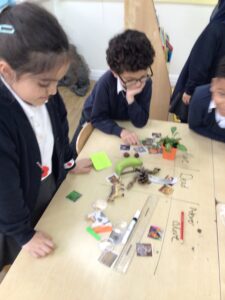
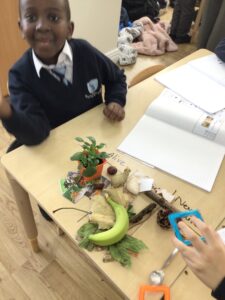

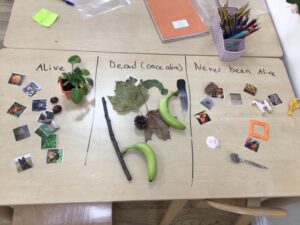

Year 2 have been sorting things into 3 categories-alive, dead and never been alive. We had a lot of fun looking at the things that were alive too!
113
Yesterday RLMc had lots of fun visiting Speke Hall. We looked at the changes for Autumn and we even saw a sleeping giant! We visited the giants house, kitchen, music room and even his playground. It was lots of fun!
250

5NA went to a solar system workshop at UCLAN. We did lots of investigations all about the solar system! 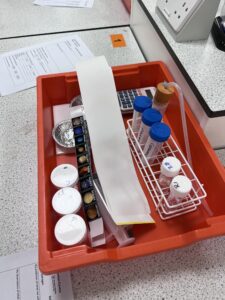

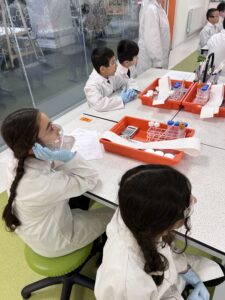
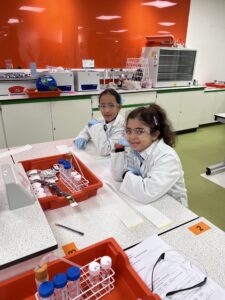
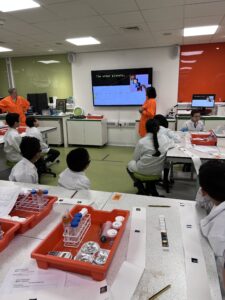
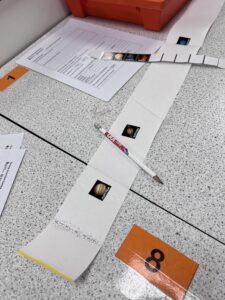
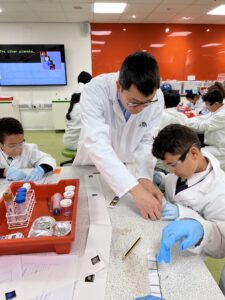
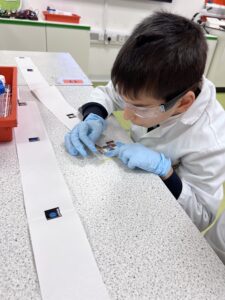


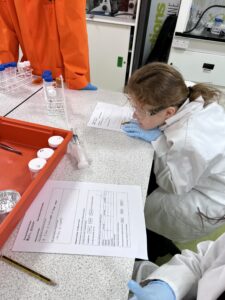
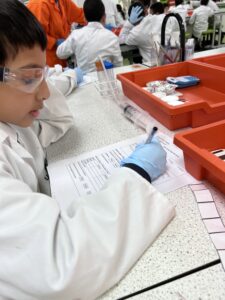


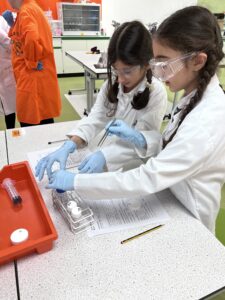
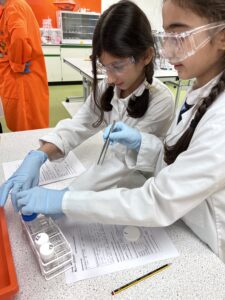


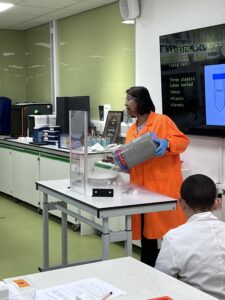
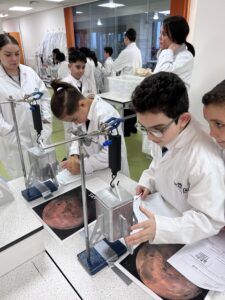

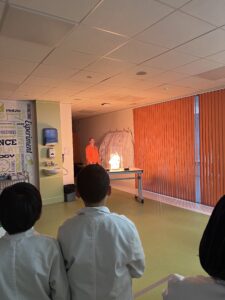

Year 1 were very excited to have a visit from lots of animals today!
153
Year 1 had a visit form lots of animals today to celebrate our learning in science.
149

We combined science with history with our TIME topic and looked at how tools to tell the time have changed over the years. We created a timeline of discoveries and measured out our own sundials with our protractors.
108
3KM have been working scientifically by exploring the question ‘do we need light to see things?’
The children had 5 boxes with a different item in each. They had to peer through the hole in the box and make a predication on what the object could be. When more light was added to the box, some objects could be seen a lot easier than others. 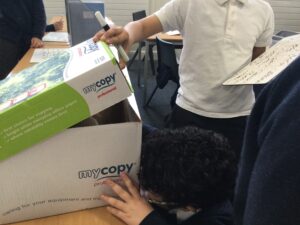
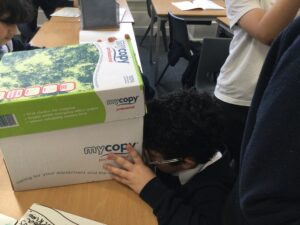
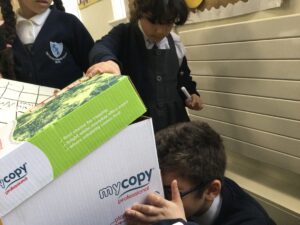
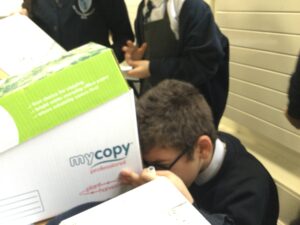

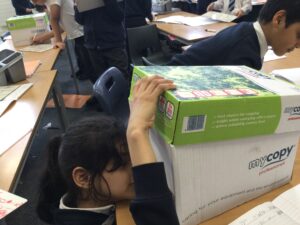



As part of our ‘Circulatory Unit’ in Science, we devised our own investigations (in small groups) to find out about the effect of exercise on our heart rate. Some groups changed the exercise carried out, some changed the number of repetitions and some changed the time set. All results were recorded and are to be discussed in order to draw our conclusions.
122
Year 3 made predictions of what materials they thought would be the most reflective and the least reflective. They then tested that and checked to see how much light was reflected off each one. We spoke about material characteristics and why they absorbed or reflected some or a lot of the light.
104
Year 3 used a very old way of producing photographs without a camera. We used light sensitive paper to create a cyanotype capture. The children created their designs using natural resources found around schools – similar to Anna Atkins.
116
For our first lesson about plants we have been on the playground to look for plants, seeds and animal evidence.
415
Year 3 had a great afternoon exploring shadows. Thankfully we got a lovely sunny day to complete this lesson. We drew our shadows and after some time we returned outside and noticed how the position of the sun meant our shadows had moved. 
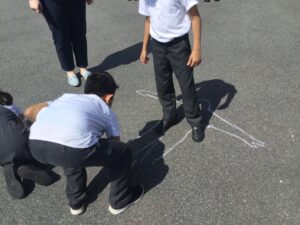
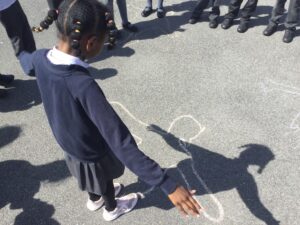
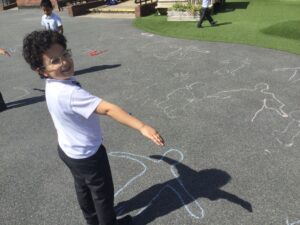
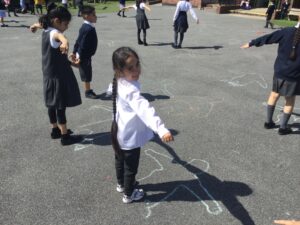
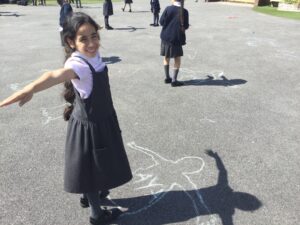
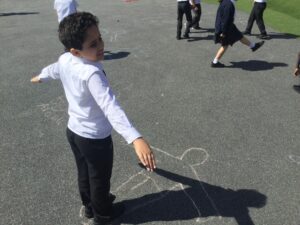
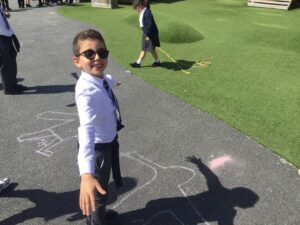
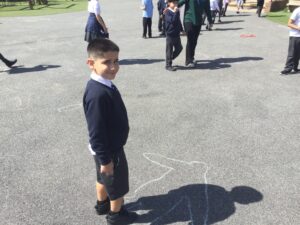

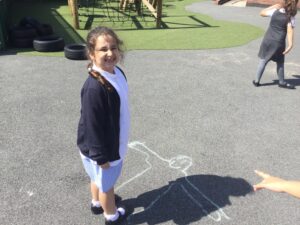

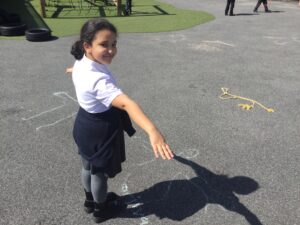
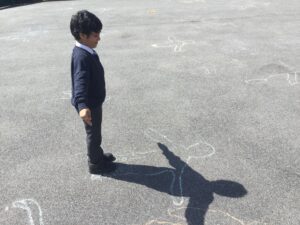

We have been learning about spiders this week and have been looking at similarities and differences.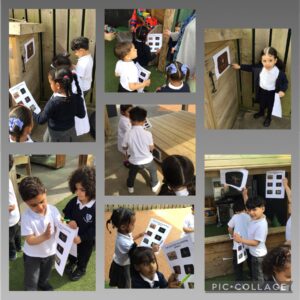

We had a fantastic day at the University of Liverpool on Friday. We took part in workshops related to Maths and Science…. including sitting in mini Planetarium!
472
Year 3 explored the different parts of a flowering plant. We found out that there are male and female parts and that bees and other insects help move pollen from flower to flower.
78

We used celery to investigate how xylems transport water and nutrients to the rest of the plant. Watch this space and see what we find out! 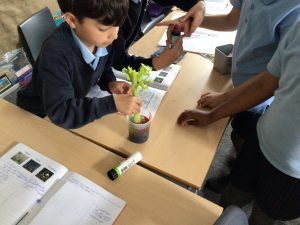
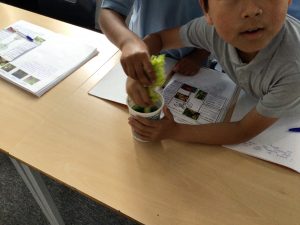

Year 3 had an exciting afternoon learning about how water is transported around pants. We completed an experiment with a celery stick and food colouring. We made a prediction about what might happen to the celery. Come back next week to see the results.
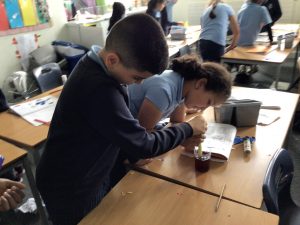
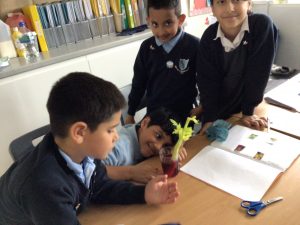
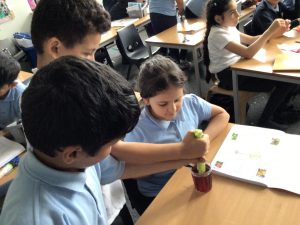
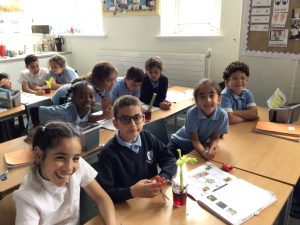
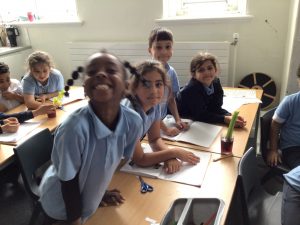
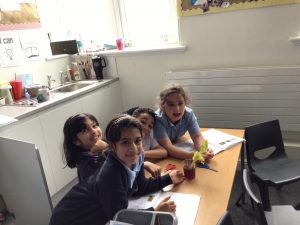



We looked at different forces in science and were able to organise them into a push and pull Venn diagram.
83
As part of our Evolution and Inheritance unit, we designed and carried out an investigation into the different beak sizes and shapes of birds. After learning about Charles Darwin and his study of finches, we carried out our own investigation: How does the size and shape of beak affect their diet? How can they thrive in the habitat in which they live?
81
We used a car and a ramp to create a fair test for friction. We found out that plastic is smooth so has a low amount of friction and sandpaper is rough and bumpy so has a high amount of friction.
70

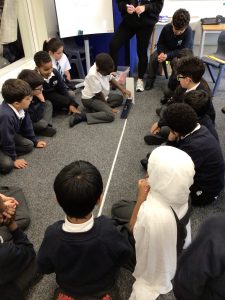
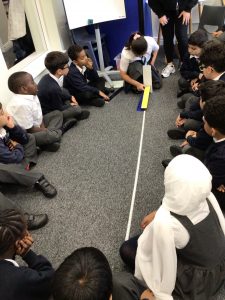
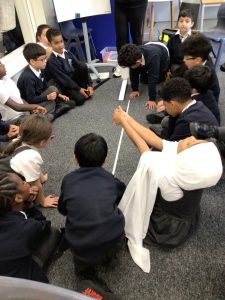
Year 3 have been exploring the force friction by testing the distance cars travel on different surfaces. We discovered that the surface carpet had high friction but plastic had low friction.

As part of their sound topic, Y4 have been investigating which mediums sound travels through. We did this by experimenting with string telephones. We had so much fun talking to our friends on our telephones but only some of them passed the message through!
94

In Science, Year 6 have been learning about Charles Darwin as part of their ‘Evolution and Inheritance’ unit. Look at this incredible writing they have produced!
133
This week, we worked scientifically by sorting and classifying different types of rocks. We explored the rocks and discussed their characteristics. The children came up with great words such as ‘rough’ ‘bumpy’ ‘smooth’ ‘sharp’
491
Year 3 had a great workshop this afternoon on how to save energy and how to be NRGenius’s. They had to create a powerful image representing why we use fossil fuels. We learnt all about renewable energy and how these are better for our environment. We ended the session by making a pledge to try our best to save energy. 💡⚡️
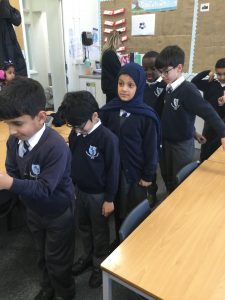
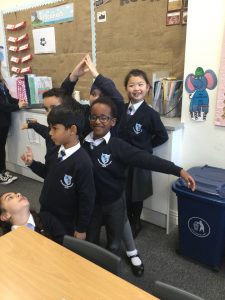
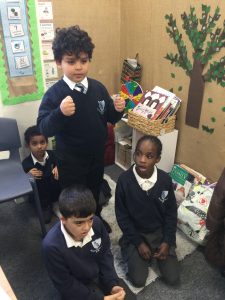
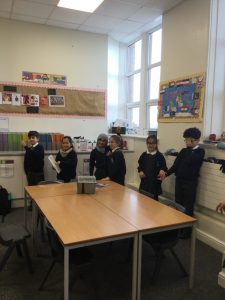
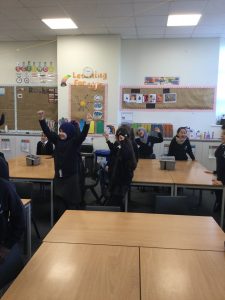
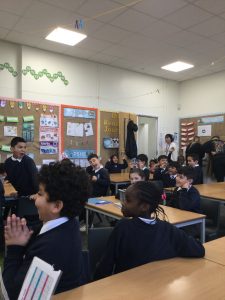
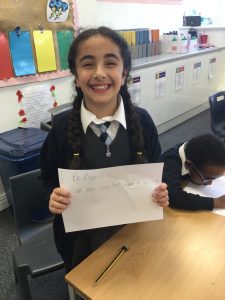
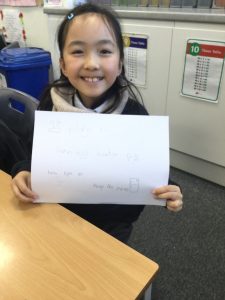
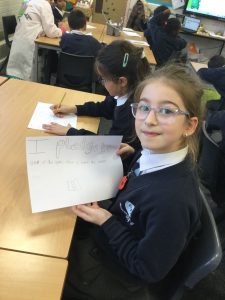
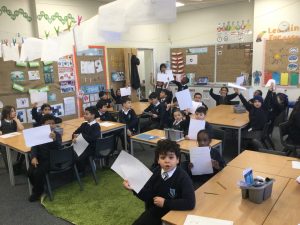

Year 3 had lots of fun learning about and talking through different ways we could save money by saving electricity. We learnt the benefits of turning off things we aren’t using and saving money by doing this. We had to create powerful images to show the importance of fossil fuels and why we need them. We then wrote our own pledge On how we will try to save money, well done Genius’s!!!⚡️💡🔦
507
Year 4 have learnt lots today about saving energy and money with Dr Watts and Dr Sparks.
106
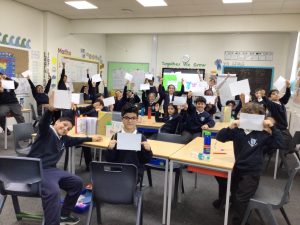
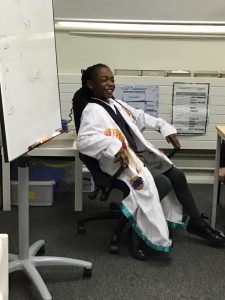
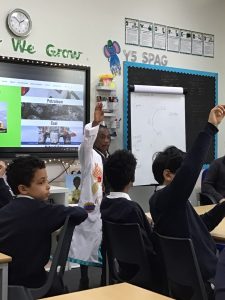
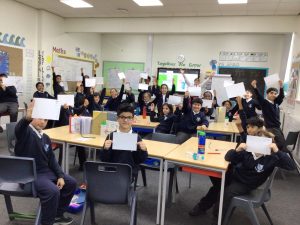 Last week we had a visit from NRG to tell us all about our use of electricity and what we can do to help. We have signed a pledge to use less electricity and water to help with waste of non-renewable energy.
Last week we had a visit from NRG to tell us all about our use of electricity and what we can do to help. We have signed a pledge to use less electricity and water to help with waste of non-renewable energy.

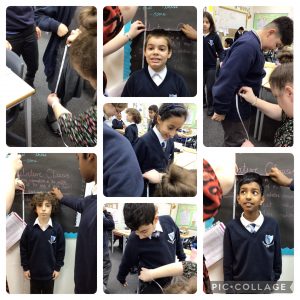
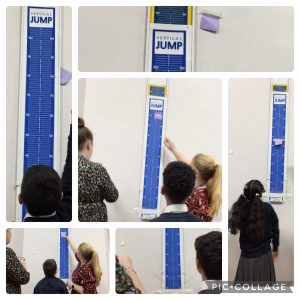 In science today we put our ideas to the test. we either chose to either investigate if children with the longest femur could jump the highest or if the tallest children could jump the highest. We completed the post it challenge and made sure our investigation was fair.
In science today we put our ideas to the test. we either chose to either investigate if children with the longest femur could jump the highest or if the tallest children could jump the highest. We completed the post it challenge and made sure our investigation was fair.

We have been studying rocks and today we tested the how hard wearing sedimentary, metamorphic and igneous are, along with their permeability and how they react to acids.
69

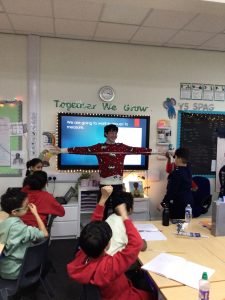
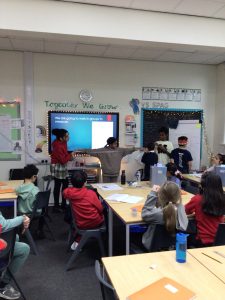
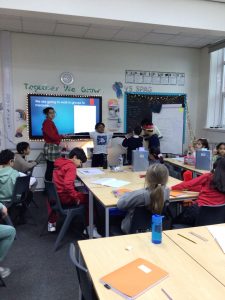
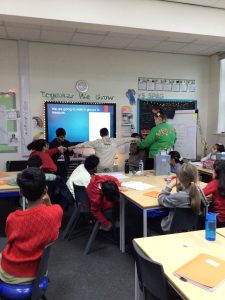
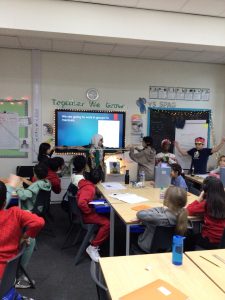 We took measurements of children from reception all the way to our eldest staff member! We then created a scatter graph of our results.
We took measurements of children from reception all the way to our eldest staff member! We then created a scatter graph of our results.



Today we tried to recreate the direction and movement of our solar system. We discussed how this is not to scale but wanted to show what we had learnt about ‘Earth and Space’ so far. Please ask us questions about the solar system! 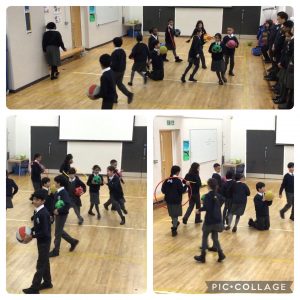


This week in science we have been looking at night and day. We have been learning about the rotation of Earth and how this creates daylight and nighttime. 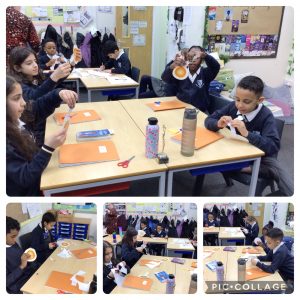


We looked at our bones that help us move about, support our body and protect our organs.
61

Y4 have been busy learning all about human and animal teeth this half term. We decided to investigate the effect different drinks had on our teeth. We discovered some shocking conclusions! 








Y3 have been busy labelling bones in the humans body. Steve the skeleton joined us for our lesson this week and taught us some names of bones in the human body. 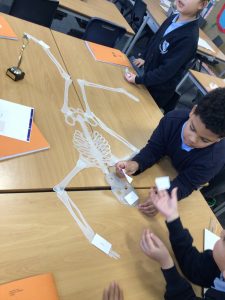
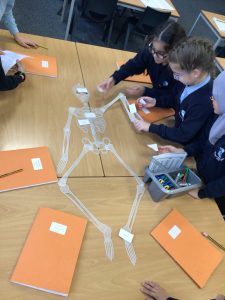
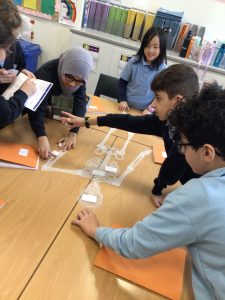
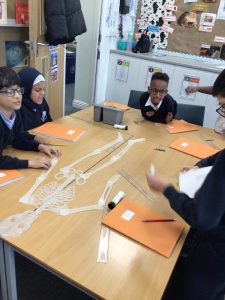
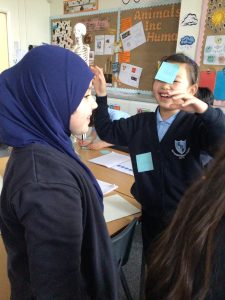
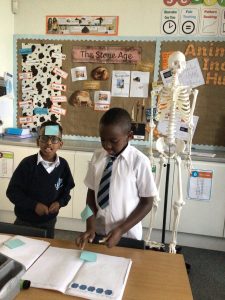
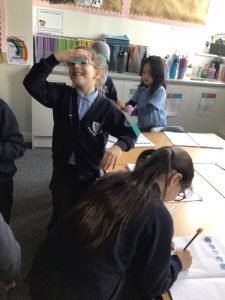

Y3 have been exploring nutrition facts from a range of food packaging. We identified the food groups we had learned about and compared measurements of salt and sugar in some foods. 

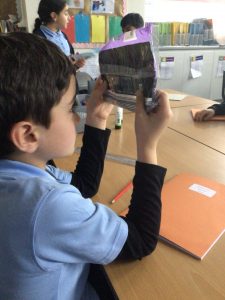
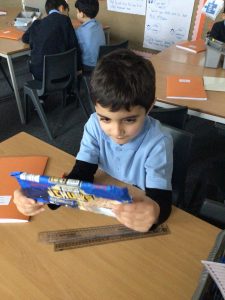


We were very lucky last week to have some visitors in our class talking to us about keeping our environment healthy and how to look after plants. We all planted our very own sunflower seeds to take home. 🌻
532
Y3 have been investigating do taller children jump further this afternoon. We took our lesson outside and measured heights and distance travelled. We concluded that generally this is true but some shorter children were able to jump just as far!
59



 Y3 & 4 were lucky enough to work with students from LJMU to learn about sustainability.. We made bracelets out of plastic bags.
Y3 & 4 were lucky enough to work with students from LJMU to learn about sustainability.. We made bracelets out of plastic bags.

Today Y4 explored the process of digestion by replicating their own model. It was a messy activity and we learned so much!
71
We are learning about our skeletons and muscles. They help to support and protect our bodies. They also help us to move.
500

We had a wonderful afternoon showing (and eating) the different phases of the moon. First the children represented this with the ball (moon) and the torch (sun) to find the phases. Then we used biscuits to recreate this. Please ask us about the different phases, can you spot the moon at home? 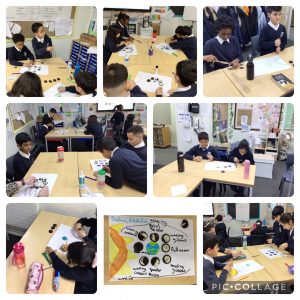
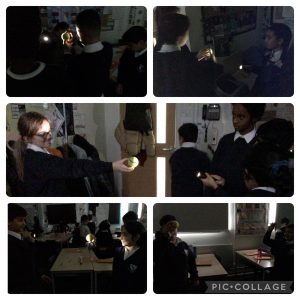



 Y4 have been exploring food chains this afternoon to build on their knowledge of animals and living things.
Y4 have been exploring food chains this afternoon to build on their knowledge of animals and living things.

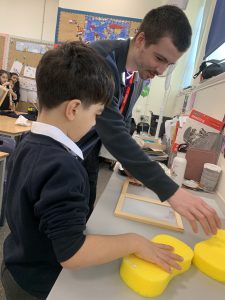
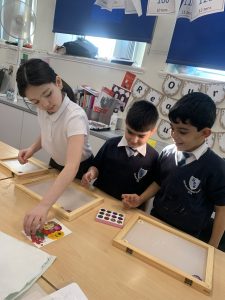
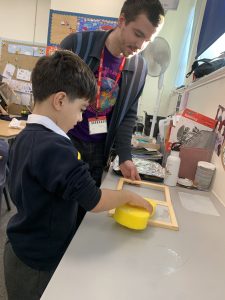 Y3 have been busy making their own paper out of pulp this morning with our visitors from Metal.
Y3 have been busy making their own paper out of pulp this morning with our visitors from Metal.

Today we tracked and measured the length of one shadow throughout the day. We noticed that our shadow was as its shorted midday and that it moved as the sun appeared to move. We explained in our books that it is the Earth spinning on its axis that creates the different times of day. 

To accompany our learning about the circulatory system and the heart, we have produced some of our own artwork and posters linked to the topic.
73
To begin our British Science Week activities, year 3 researched a new scientist. We discovered that Alexander Miles invented automatic elevator door in 1887. We completed a research activity on the IPads and created our own art piece of Alexander using art skills of continuing the picture and shading.
516
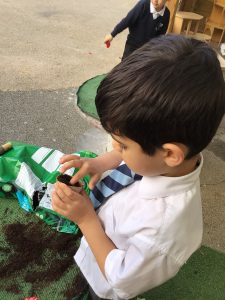
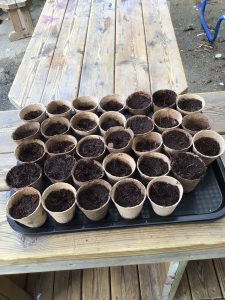
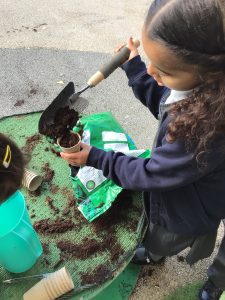
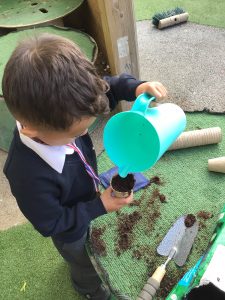
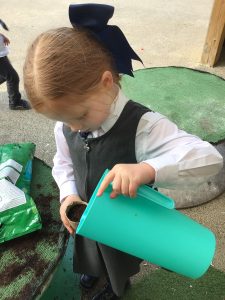
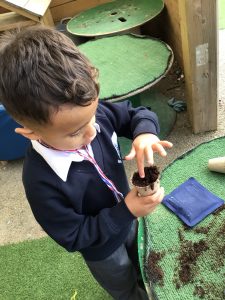
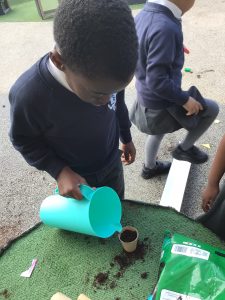
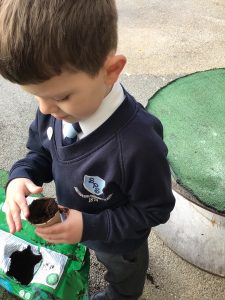
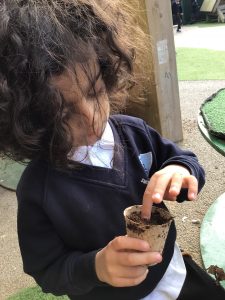
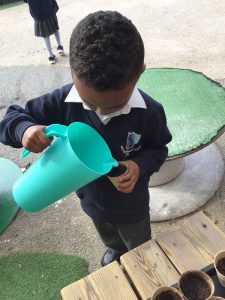
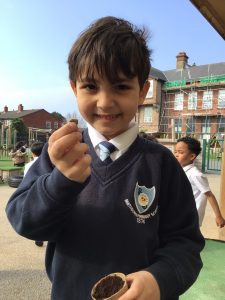
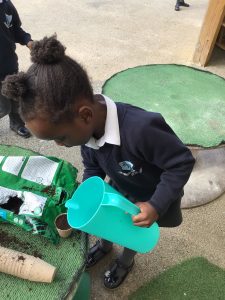
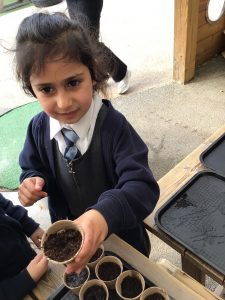
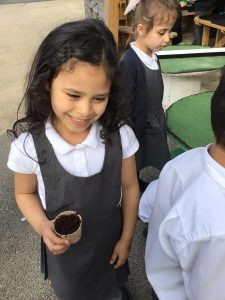
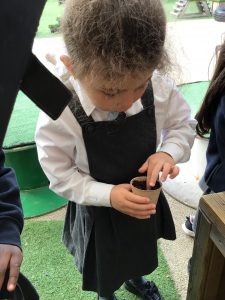 We have had a great time beginning our topic of Growth by planting sunflower seeds. We will observe the changes to the seeds over the next few weeks. We are also celebrating Science Week at school this week.
We have had a great time beginning our topic of Growth by planting sunflower seeds. We will observe the changes to the seeds over the next few weeks. We are also celebrating Science Week at school this week.

This week our focused story in literacy is Errol’s Garden. If you would like to share it at home, here is a link to the book.
145
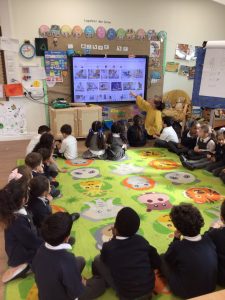
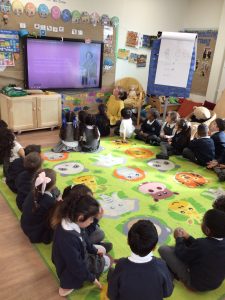 This week we are celebrating Science Week at school. Reception are learning about a scientist called Sarah Boone who helped to create the modern day ironing board.
This week we are celebrating Science Week at school. Reception are learning about a scientist called Sarah Boone who helped to create the modern day ironing board.

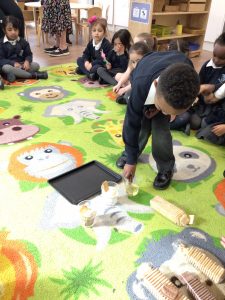
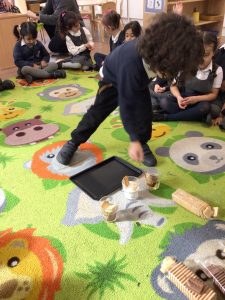
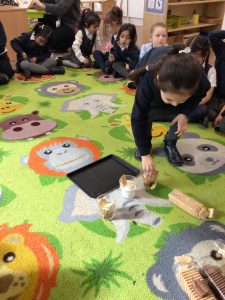
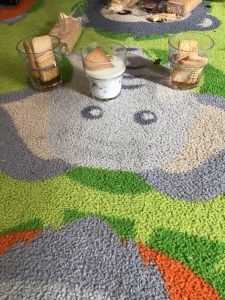 As part of Science Week we did an experiment about which biscuit is the best for dipping! We have used a variety of biscuits to dip into milk, water and oil. We looked to see which liquid was the best to use. Thank you Mrs Kelly for giving us great ideas for a fun afternoon!
As part of Science Week we did an experiment about which biscuit is the best for dipping! We have used a variety of biscuits to dip into milk, water and oil. We looked to see which liquid was the best to use. Thank you Mrs Kelly for giving us great ideas for a fun afternoon!

This week we have planted sunflower seeds, made scented play dough using lavender, rosemary and mint and planted vegetables, daffodils and herbs. We will be watching the changes to the seeds as they grow. 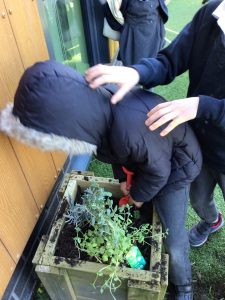
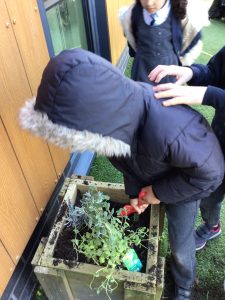
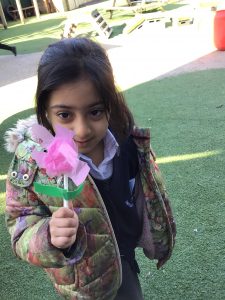
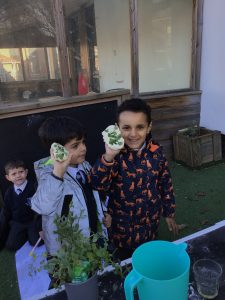
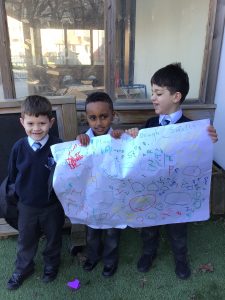
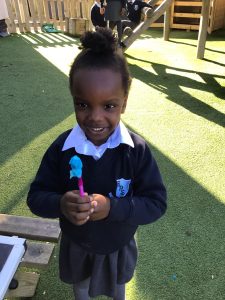
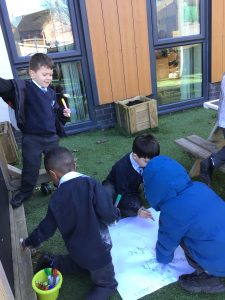
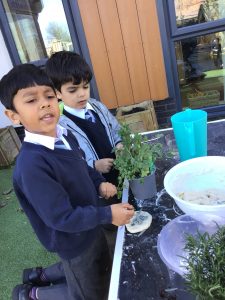
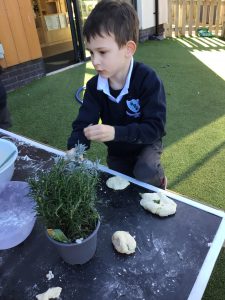
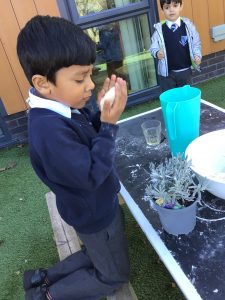
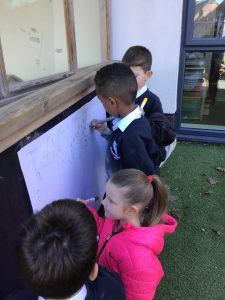
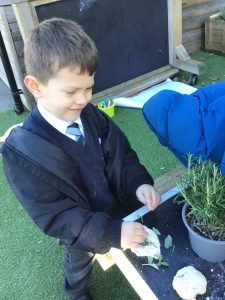
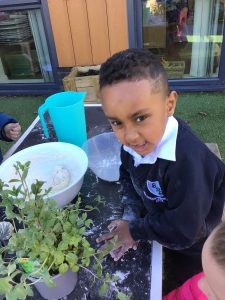
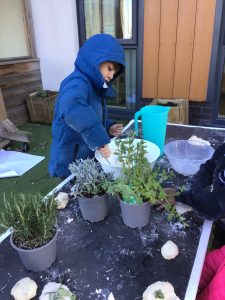

This afternoon, for British Science Week 2025, 3KMc investigated which biscuit was the best dunker. We were so shocked that the strongest biscuit was a rich tea! We thought bourbons would be the strongest as they were thicker. The rich tea dunked over 50 times without breaking!!
56
Y3 have been busy upcycling their fashion items ready for their fashion show for parents. We have learned all about recycling and sustainability over the last few weeks which has inspired us to carry on out of school. Thank you metal!
69

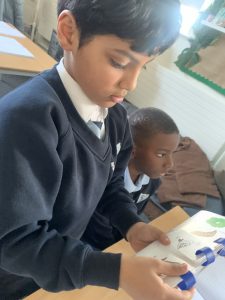
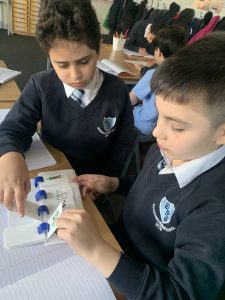
Y4 have been busy exploring food chains in the environment. They have learned about the words consumer, producer and predator whilst recapping the process of photosynthesis.

Both Y3 classes took to the playground to explore shadows in real action. We drew around each others shadows with chalk. We observed that our shadows are attached to us!
53
This morning we have been supporting Laura from Metal with a new card game all about sustainability. We were lucky enough to be the first school to trial the game and learned a lot about symbols and ways to upcylce and compost. Thank you Laura!
70
As part of our Science Week work, Year 6 learnt about Ibn Al-Haytham, the man credited with inventing the pinhole camera. As our Lowry portraits were so good, we couldn’t resist applying our artistic skills to this wonderful scientist too.
90
We have planned out our experiments in order to see how we can measure craters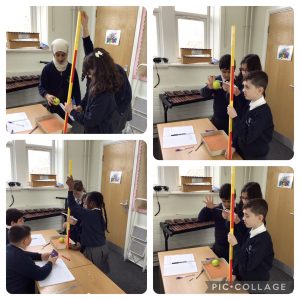 and what affects the result. We had a create time changing variables and recording our average in order to make it a fair test.
and what affects the result. We had a create time changing variables and recording our average in order to make it a fair test.

Year 6 investigated how long it took a range of biscuits to dissolve in warm liquid and presented findings using graph software.
93
To celebrate science week, reception read The Gingerbread Man and talked about what might happen if the gingerbread man fell into the water. We decided to see what would happen if we dunked biscuits into milk, oil and water.
509
Last week we had a wonderful time with our biscuit investigation. Our question to investigate ‘Does the thickness of a biscuit affect it’s breaking dunk time?’ 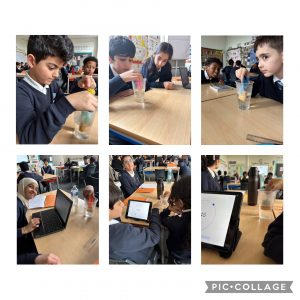
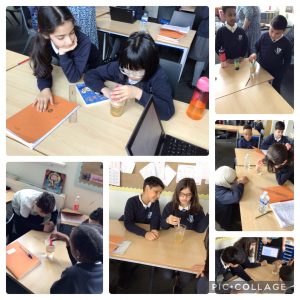
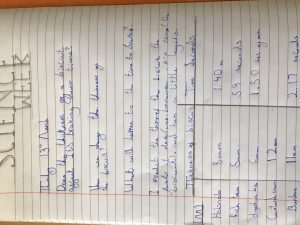

Today, we investigated which objects were good reflectors of light and which objects weren’t good reflectors of light. We discovered that objects with shiny, smooth surfaces were better at reflecting light than objects with dull, rough surfaces.
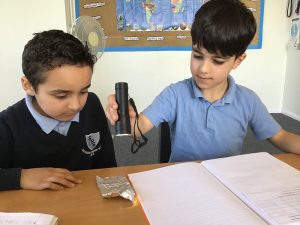
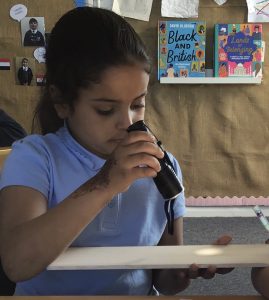
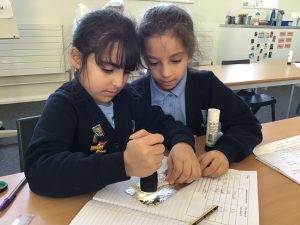


For science week, we researched Ruth Wakefield. We learnt all about the temperatures needed and the variables that she changed. We then had a lesson in cookie making with our wonderful cook Monica and decorated the cookies with her face. 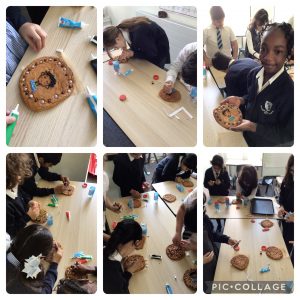
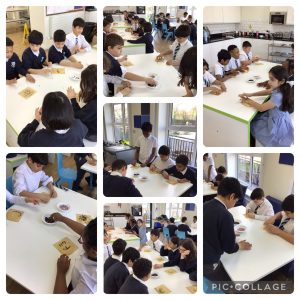


We planned and carried out our own investigations in groups today about the effects of exercise on our heart beats.
66
We have had a lovely day at Martin Mere today.
we helped Ava find out which way she had to migrate, went on a treasure hunt, explored the wetlands and enjoyed the play area too!

Investigation: How do different types of exercise affect our heart rate?
Activity completed. Results recorded. Now it’s time to interpret and devise a conclusion.


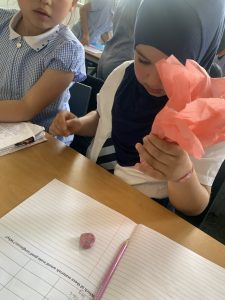
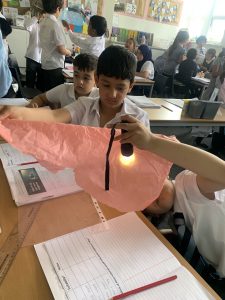
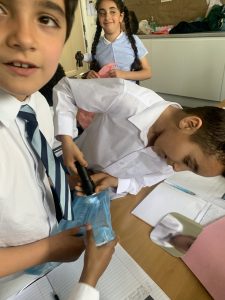
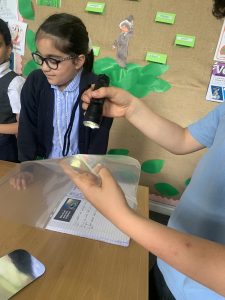
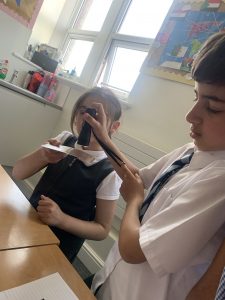
3KMc have been exploring different materials to decide which ones would be most suited to creating sunglasses. We applied our knowledge of sun protection and new vocabulary words we have learned during our Light topic.

Y4 have been busy classifying animals according to their characteristics. We then used this knowledge in a Carroll diagram
56
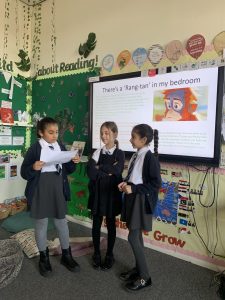
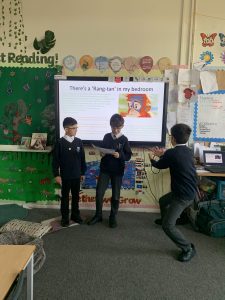
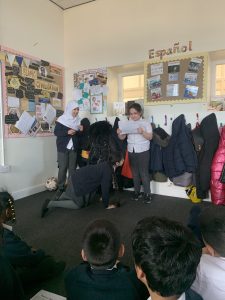
After learning about deforestation, Y4 rehearsed the poem There’s a Rang Tan in my Bedroom. We learned about how forests are being cut down for palm oil production and focused on intonation in performing.

Y4 have been working scientifically and explored how many dunks different types of biscuit could withstand in cold water. We recorded the amount of dunks each biscuit lasted. Some even made it to over 50!
64
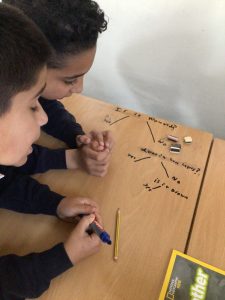
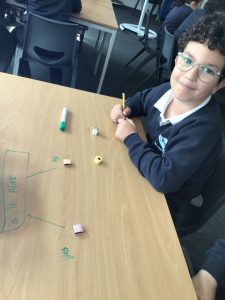
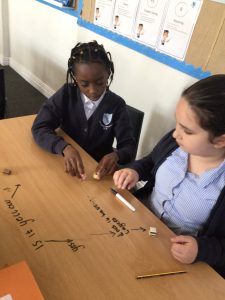
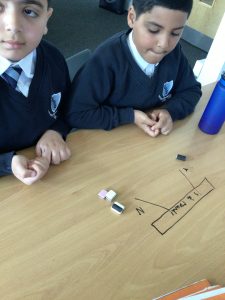
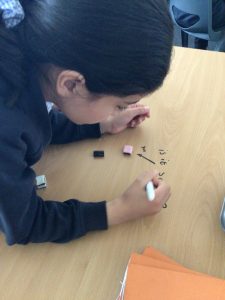
Today Y4 explored classification keys. We started by identifying characteristics that separate items. We practiced with liquorice first before applying to animals. Well done Y4!

We had a very exciting start to our week with our first Chester Zoo Workshop on UK Wildlife. We used the iPads to find some species in our playground. The workshop got us excited for our upcoming trip to the zoo on Thursday. 🐒🐼🐯🦁🦋🐍
458

This morning we enjoyed using the seek app to find the names of native creatures and plants in our playground. Thank you to Lucy from Chester Zoo – a great start to our workshops!
69
We absolutely loved going to Martin Mere for our immersive Viking experience. We took part in weaving, foraging, thatching and defending the village. 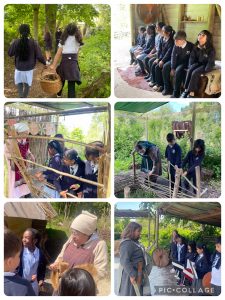
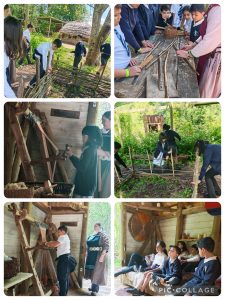
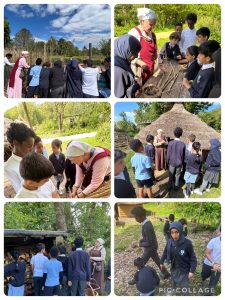
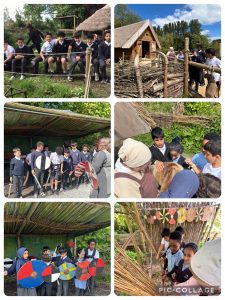

Today we had a visit from Chester Zoo. We looked at animals and plants in our school grounds. 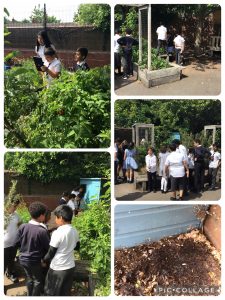



We had a fantastic day exploring Chester Zoo. The children loved looking at the variety of animals. We saw chimpanzees getting fed, lions having a nap, penguins splashing water and even explored the bat cave. The children had smiles on their faces all day! 🦁🐒🐧🦇
454


On Wednesday we enjoyed our final workshop with Chester Zoo (in school).
61
We absolutely loved going to Chester Zoo to learn about the animals and the trees. All of the children behaved exceptionally and loved the trip. 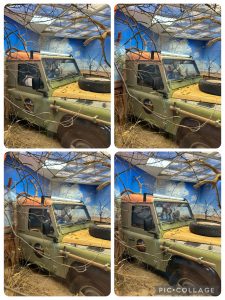
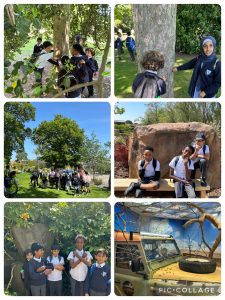
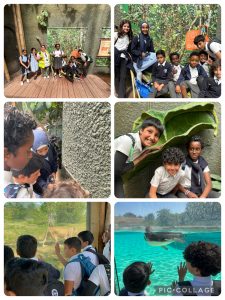
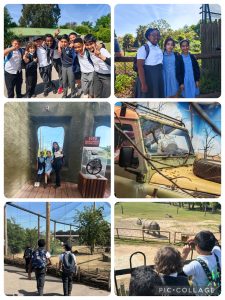
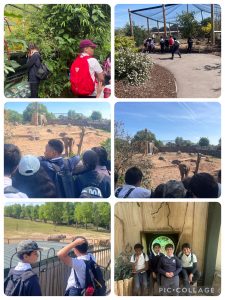
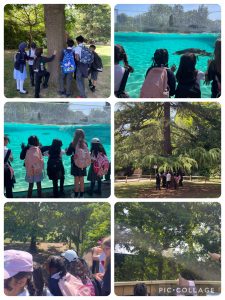
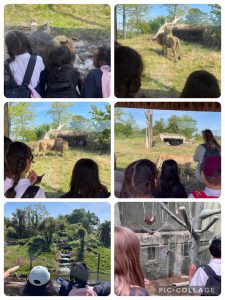
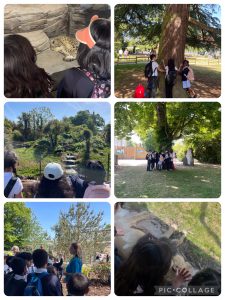


In Reception the have been working extremely hard every week with a new weekly challenge – which they must complete independently!
The children were given a challenge this week to help out The Jolly-Roger’s family to see what items of treasure would float and which would sink. They experimented with different objects – coins, rocks, kids and rubber bands.
70

Today we completed an investigation about how the shape of plasticine can affect the time it takes to travel through water. We loved creating different shapes and timing it! 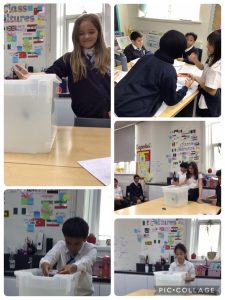

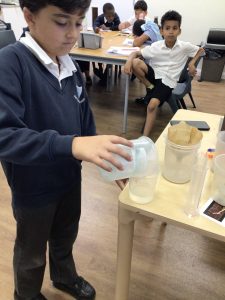
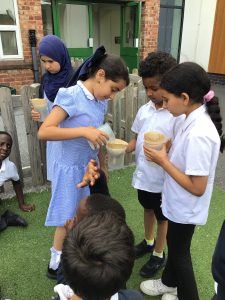
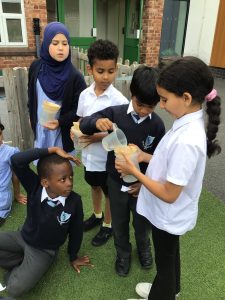
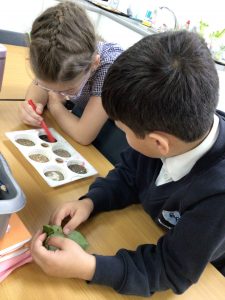
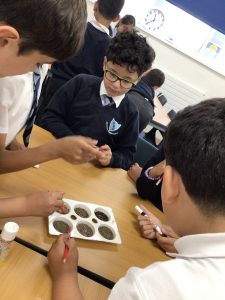
In our plants topic, Y3 carried out an investigation to find out how much water different soils hold. We started by observing and describing the characteristics of the different soils and chose three of them to test. We then decided to plan and measure how much water each of the soils held. We used filter paper and a funnel to allow the water to pass through and measure how much passes through. Y3 were super!

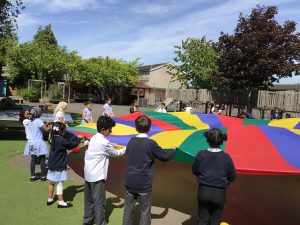
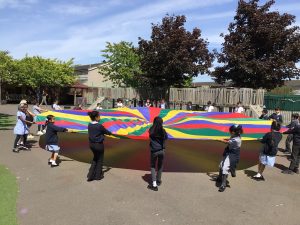
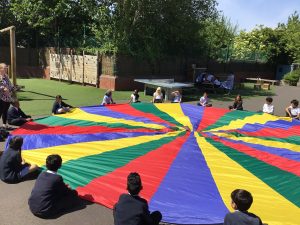
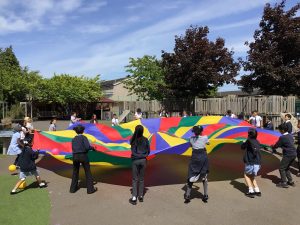
To understand how particles move in solids, liquids and gases, Y4 took to the outdoors to explore their movement using the parachute. We kept the particles tight with a little movement in solids, more movement in liquids to fit the space in a level surface and then we allowed the balls to fly everywhere for gases (this was our favourite bit!)

Y4 kicked of their States of Matter topic by observing dancing raisins. We discovered that all states of matter were featured in this observation and refined our explanations to be more scientific!
51
We have loved making our trains last week in Year 5. We’ve built our chassis, adding electrics and tested our locomotives. We were even visited by a local engineer from Stadler Rail Company to help us with our electrics and testing. 
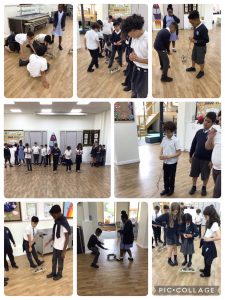

Today is ‘Rainforest Day’. We are taking part of a zoom by Chester Zoo where we can learn all about the different layers of the rainforest and how animals we have recently visited at Chester Zoo are adapted for the forest and where they would live in the rainforest. We have also learnt about how to help from England to make sure the rainforest is not further destroyed. 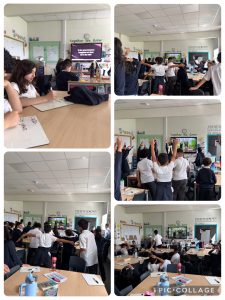

In Y4 we investigated one of our original questions ‘Are all liquids the same?’ We decided to have liquid races to explore this question. We raced washing up liquid, golden syrup, juice and cooking oil and discovered some are faster than others. We learned the word viscosity in order to describe this characteristic of liquids. We had so much fun doing so!
57

Yesterday, we investigated a range of properties for different materials and recorded this in a Carroll diagram. The children loved testing of it was magnetic or not. This will lead onto our thermal insulation investigation! 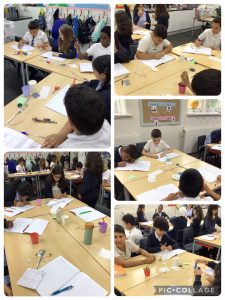

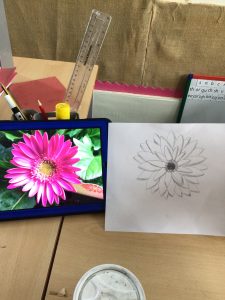
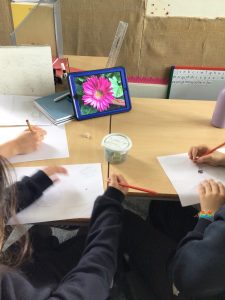
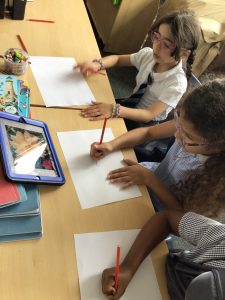
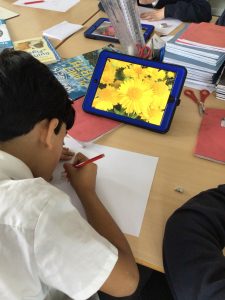
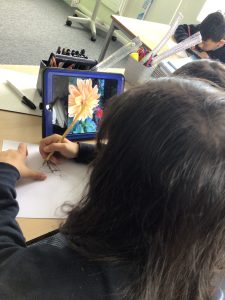
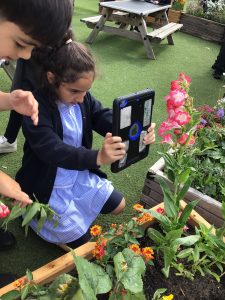
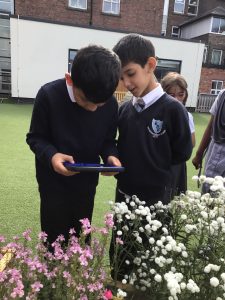
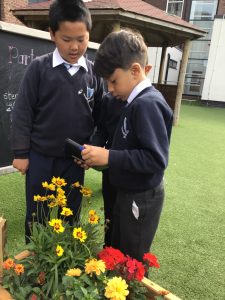
Y3 built on their plant topic today by completing some observational drawings. We noticed how much attention to detail was required to sketch the intricate details of the flowers.

Today the children planned an investigation about solubility. We had a range of investigations and talked about reversible and irreversible changes. 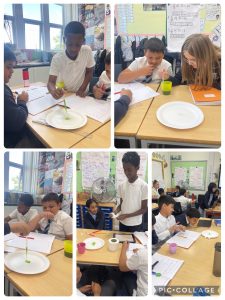
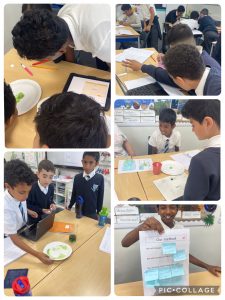

Y4 have had a brilliant day exploring sound and learning how it is created by vibrations.
28
We kicked off science in Y1 by thinking about what seasons are. We sang the months of the year song to understand which months are in which season. We realised we are currently in Autumn! If anybody spots any signs of autumn outside of school, please bring in to share with the class. We spent the afternoon observational sketching pumpkins, adding seasonal features on our play dough mats, practising cutting skills to make our own season picture and painting some season signs.
23
We used magnifying glasses to look at all the different thing that had fallen down off the trees.
39
Lots of fun in science this afternoon exploring the names of parts of our body. We drew around outdoors with chalk, labelled diagrams and worked scientifically to measure how many cubes/paper clips our hand length was. We then compared this with our friend’s measurements.
26
Y4 took a walk around the school to note different sounds we heard. Mr. Smith got a 7/10 for volume and we enjoyed Mrs. Hollinsworth’s 3/10 radio songs in the office!
31
We have been finding out about specific animal adaptations which enables the species to live and thrive in their habitat.
23
In science we have been looking at Autumn. We had lots of fun making leaf people, hedgehogs and leaf rubbings.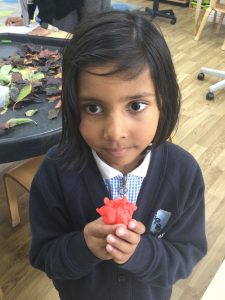
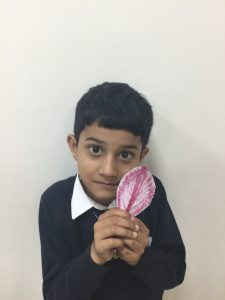












We had a very fun science lesson yesterday recreating the frog life cycle and guessing which stage they were! LOTS of laughing in 5JH.
A student even went home and created a poster as extra homework. 










Y1 have been exploring, identifying and naming facial features. We labelled diagrams, created our own facial monsters and practiced vocab with our Mr. Potato heads. We’ll be lining this to our senses soon!


We think our sketches are perfectly matched to our ‘comicography’work we completed yesterday!
22
Today we released our classroom butterflies. We have loved watching them grow from caterpillars and learning about how they become butterflies in their cocoons.
12

We investigated which type of beak we the best at picking up different food sources in science today.Our
’food sources’ represented were: insects, berries, seeds, worms, fish and meat on a bone. The next step is to look at our results and draw a conclusion about how successful (or not) each beak type was.
15
What a stunning piece of work in Science today – finding out all about fossils.
6
On Friday we learned so much about space and how Neil Armstrong explored the moon. We also used teamwork and communication skills to recreate images about space .

Y1 PK went on a Welly Walk to Crown Street Park. We followed directions – North, South, East, West and spotted what we could see. We also looked for signs of Autumn and that Autumn is changing into Winter.
6
Today we have used data from our investigation to create a database on Google Sheets. We used the database to answer questions such as ‘Who jumped the highest?’ And ‘Who jumped higher than 1.9m’. 







We learnt about Mary Anning in Y3, so as we are currently learning about fossils in Year 6 as part of our Evolution and Inheritance unit, today we revisited our learning with a view to presenting our information to Year 3 to help them in their learning journey.
3
We loved our science experiment this week that involved building a switch. We discussed the different types of switches and how they are used to control a circuit. Then, we built a switch using a paper clip and a split pin.
57
Y1 PK enjoyed a Welly Walk to Crown Street Park. We investigated what we could see travelling North, East, South and West. We also looked for signs of Autumn and how Autumn was changing into Winter.
5

1JR have had lots of fun this afternoon on our walk to our local park. We looked at what we could see when looking north, east, south and west. We also looked at how our environment has changed for winter.
57